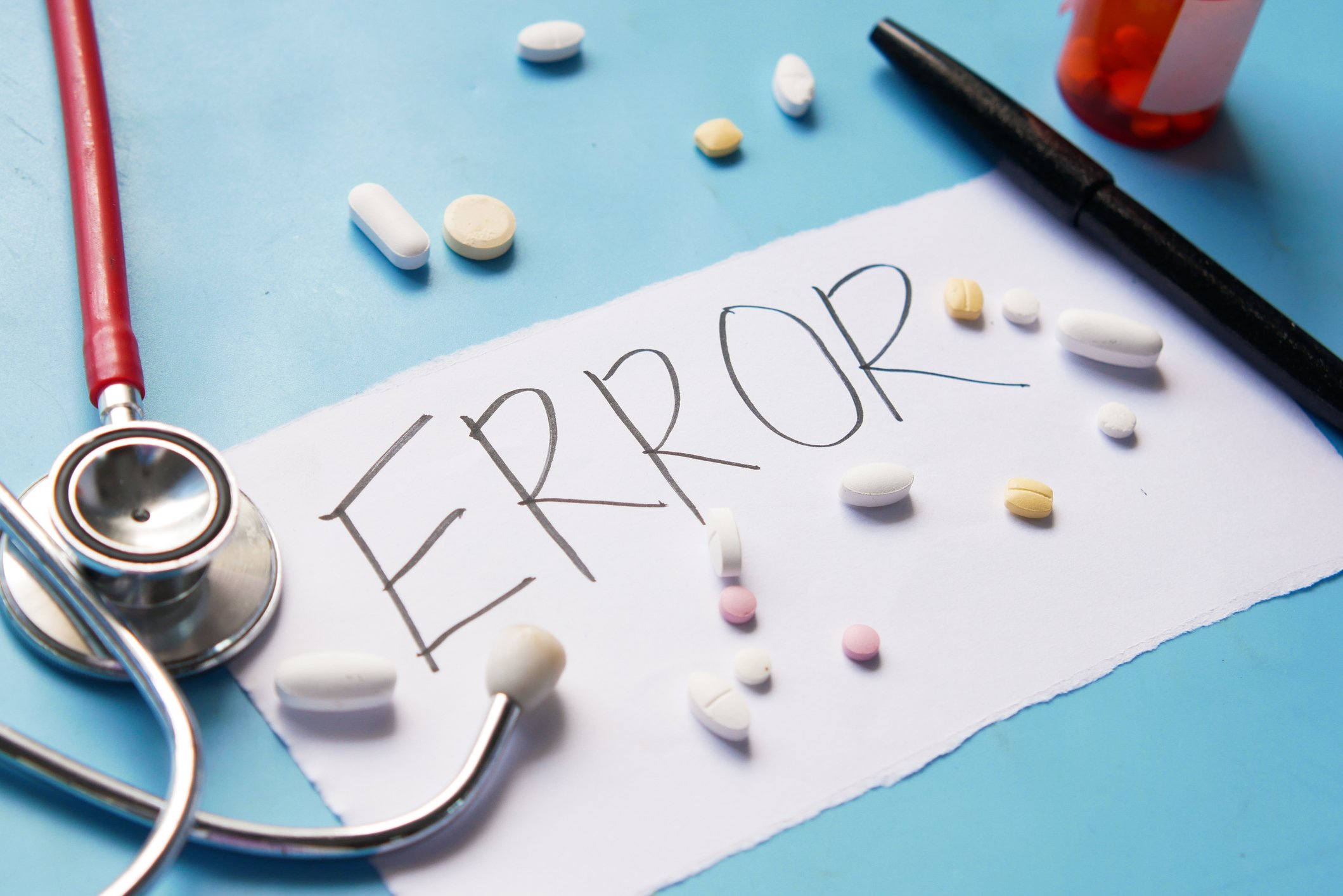Understanding and Mitigating Medical Errors
Introduction
Medical errors, a pervasive concern in healthcare, jeopardize patient safety and demand careful examination. Understanding the various types and sources of these errors is essential for implementing effective prevention strategies. From diagnostic inaccuracies to surgical blunders, medical errors span a broad spectrum, often rooted in factors such as miscommunication and system failures. To develop targeted interventions, it is crucial to identify the sources, which range from inadequate communication to systemic issues like poorly designed healthcare systems. Recognizing the significance of nurses as frontline healthcare providers and the potential for technology to enhance patient safety, this paper aims to shed light on the complexities surrounding medical errors and the collaborative efforts required to minimize their impact. (Understanding and Mitigating Medical Errors)
Types of Medical Errors
Medical errors, spanning a broad spectrum, encompass diagnostic missteps, medication blunders, and surgical mishaps. Each type poses unique challenges to patient safety, necessitating a closer examination.

Diagnostic errors, a prevalent concern, often stem from misinterpretations of test results or insufficient clinical evaluations. These errors can lead to delayed treatments or unnecessary interventions, impacting patient outcomes significantly. It is imperative to enhance diagnostic accuracy through ongoing training and the incorporation of advanced technologies. (Understanding and Mitigating Medical Errors)
Medication errors, another critical category, encompass a range of issues from incorrect dosage administration to drug interactions. Poor communication among healthcare providers and inadequate medication reconciliation processes contribute to these errors. Standardizing medication administration protocols and employing technology, such as barcode systems, can mitigate these risks.
Surgical errors, though less common, carry substantial consequences. Invasive procedures demand precision, and errors can result from miscommunication among surgical teams or lapses in pre-operative verification. Ensuring effective communication, implementing safety checklists, and fostering a collaborative surgical environment are essential in preventing these errors.
Communication breakdowns form a pervasive theme across medical errors. Misunderstandings between healthcare professionals, inadequate patient-provider communication, and ineffective handoffs contribute significantly. Improving communication through standardized protocols, team training, and fostering an open dialogue culture can address this root cause.
Patient misidentification errors, though seemingly basic, pose serious threats. Confusion in patient identification can lead to administering treatments to the wrong individual, compromising their safety. Implementing strict patient identification protocols, including the use of unique identifiers, is essential in preventing these errors.
System-related errors are often overlooked but play a critical role in patient safety. Inadequacies in healthcare system design, such as poorly integrated electronic health records (EHRs) or inefficient workflow processes, can contribute to various errors. Streamlining systems, optimizing EHR functionalities, and ensuring user-friendly interfaces are paramount for reducing these systemic risks.
Infections acquired within healthcare settings, known as healthcare-associated infections (HAIs), represent another facet of medical errors. Inadequate infection control measures, lapses in hygiene practices, and antibiotic misuse contribute to the spread of infections. Adhering to strict infection prevention protocols, enhancing staff education, and monitoring compliance can significantly reduce HAIs.
Understanding the diverse types of medical errors underscores the importance of implementing multifaceted prevention strategies. Combining technological advancements, standardized protocols, and ongoing education for healthcare professionals are essential components in creating a safer healthcare environment for patients.
Sources of Medical Errors
Medical errors arise from a myriad of sources, necessitating a comprehensive exploration to establish effective prevention measures. From communication breakdowns to systemic deficiencies, understanding these sources is pivotal for enhancing patient safety.
Inadequate communication among healthcare providers stands out as a significant source of medical errors. Misunderstandings, incomplete information transfer, and unclear orders can lead to serious consequences. To address this, implementing standardized communication protocols and fostering a culture of open dialogue are essential.
Systemic issues within healthcare infrastructure contribute substantially to medical errors. Poorly designed healthcare systems, including fragmented electronic health records (EHRs) and inefficient workflow processes, create an environment conducive to errors. Streamlining system structures, optimizing EHR functionalities, and ensuring user-friendly interfaces are crucial steps in mitigating these systemic risks.
Human factors, such as fatigue and stress, play a substantial role in medical errors. Healthcare professionals working in high-stress environments may experience cognitive lapses leading to mistakes. Implementing strategies like workload management, regular breaks, and fostering a supportive work environment can alleviate these factors.
Insufficient training and education also emerge as contributors to medical errors. Inadequate knowledge about new medical technologies or evolving treatment protocols can lead to mistakes. Continuous education and training programs are imperative to keep healthcare professionals updated and proficient in their roles. (Understanding and Mitigating Medical Errors)
Patient-related factors, including lack of engagement or understanding of their medical conditions, contribute to errors. Miscommunication regarding medications, treatment plans, or failure to follow prescribed regimens can compromise patient safety. Improving patient education, fostering shared decision-making, and ensuring clear communication about treatment plans are essential.
Understaffing and high workload represent additional challenges in healthcare settings. A shortage of healthcare professionals may lead to rushed decisions, overlooked details, and compromised patient care. Addressing staffing concerns, optimizing workloads, and ensuring adequate support are crucial steps in preventing errors associated with these challenges.
Overreliance on memory and manual processes poses a risk for medical errors. With the complexity of healthcare tasks, relying solely on human memory introduces the potential for forgetfulness or oversight. Implementing technological solutions, such as barcode medication administration systems, can significantly reduce reliance on memory and enhance accuracy.
Identifying and addressing these diverse sources of medical errors demand a collaborative effort from healthcare professionals, administrators, and policymakers. By implementing targeted strategies that address communication breakdowns, systemic deficiencies, human factors, education gaps, patient-related issues, staffing challenges, and reliance on manual processes, the healthcare industry can substantially reduce the occurrence of medical errors, ultimately improving patient safety and outcomes.
Nurses’ Involvement in Medical Errors

Nurses, as frontline caregivers, play a pivotal role in patient safety, but their involvement in medical errors cannot be overlooked. Understanding the complexities surrounding their responsibilities is crucial for devising strategies to enhance both patient care and error prevention.
Nurses are often at the forefront of medication administration, making them susceptible to errors. Incorrect dosages, administration times, or drug interactions may occur due to a variety of factors, including workload pressures. To mitigate this risk, adequate staffing levels, clear communication, and technology-assisted medication management systems are essential.
Communication breakdowns among healthcare teams can lead to errors, and nurses, being central to these teams, are not immune. Ineffective communication between nurses and other healthcare providers can result in misunderstandings about patient care plans or treatment strategies. Establishing standardized communication protocols, regular team meetings, and fostering a culture of open communication are critical in addressing this challenge.
Fatigue, a common issue among nurses working long hours, is a contributing factor to medical errors. Exhaustion can impair decision-making and attention to detail, increasing the likelihood of mistakes. Implementing strategies such as reasonable work hours, adequate breaks, and supportive workplace environments are essential for preventing errors associated with fatigue.
Nurses also have a vital role in patient monitoring, and lapses in this responsibility can lead to delayed recognition of deteriorating patient conditions. Enhancing training on recognizing early signs of complications, implementing continuous monitoring technologies, and promoting a proactive approach to patient care can significantly reduce errors related to inadequate patient monitoring.
While nurses are crucial in preventing errors, they may inadvertently contribute to mistakes. Missteps in documentation, failure to follow established protocols, or insufficient adherence to safety procedures are potential areas of concern. Continuous education, regular training updates, and the establishment of clear guidelines can empower nurses to uphold stringent safety standards.
Nurses actively participating in root cause analyses following an error occurrence is crucial. This involvement ensures a comprehensive understanding of the factors contributing to errors and facilitates the development of preventive strategies. Establishing a blame-free environment encourages nurses to report errors without fear of repercussions, fostering a culture of transparency and continuous improvement.
Recognizing the intricate balance nurses maintain between providing compassionate care and managing complex responsibilities is essential. By acknowledging their pivotal role in both preventing and inadvertently contributing to medical errors, healthcare systems can tailor interventions to support nurses. Through a combination of adequate staffing, clear communication channels, fatigue management, continuous education, and proactive error reporting, nurses can continue to be the cornerstone of patient safety in healthcare settings. (Understanding and Mitigating Medical Errors)
Ways of Addressing and Minimizing Medical Errors
Addressing and minimizing medical errors requires a multifaceted approach, involving healthcare professionals, technology integration, and systemic improvements. Recognizing the intricate nature of these errors is the first step towards implementing effective strategies.
Communication lies at the forefront of error prevention. Establishing standardized communication protocols among healthcare teams enhances information exchange and reduces misunderstandings. Regular team meetings, facilitated by open communication, foster collaboration and promote a shared understanding of patient care plans.
Implementing advanced technologies in medication management is pivotal. Barcode medication administration systems assist in accurate dosage verification and reduce the likelihood of medication errors. Integration of Electronic Health Records (EHRs) streamlines information access, minimizing errors related to incomplete or inaccurate patient data.
Cultivating a culture of safety within healthcare settings is paramount. Encouraging healthcare professionals to actively participate in error reporting systems facilitates a comprehensive understanding of error trends. This approach creates a blame-free environment, allowing for the identification of root causes and the development of targeted preventive strategies.
Standardizing procedures across healthcare facilities is essential for minimizing errors. Establishing clear guidelines for diagnostic processes, medication administration, and surgical protocols reduces variability and enhances consistency. This standardization aids in error reduction and ensures a uniform approach to patient care.
Continuous education and training programs are integral components of error prevention. Keeping healthcare professionals updated on the latest medical advancements, technologies, and safety protocols enhances their competence. Ongoing education also reinforces the importance of vigilance and adherence to standardized procedures.
Integrating technology for patient monitoring contributes significantly to error prevention. Continuous monitoring technologies provide real-time data on vital signs, enabling healthcare professionals to detect early signs of patient deterioration. This proactive approach improves response times and reduces the likelihood of adverse events.
Root cause analyses following an error occurrence are instrumental in preventing future mistakes. Involving healthcare professionals in a thorough examination of the factors contributing to errors facilitates learning and adaptation. Insights gained from these analyses inform the development of targeted interventions.
Encouraging a patient-centric approach is crucial. Involving patients in their care plans, educating them about medications, and fostering open communication about their health contribute to error prevention. Engaged and informed patients act as partners for their own safety.
Addressing and minimizing medical errors demands a comprehensive and collaborative effort. By focusing on communication enhancement, technology integration, a culture of safety, standardization of procedures, continuous education, patient engagement, and thorough root cause analyses, healthcare systems can create a safer environment for both patients and healthcare professionals. Continuous evaluation and adaptation of these strategies are essential to stay abreast of evolving healthcare challenges and ensure sustained error reduction.
Nurses’ Role in Addressing Medical Errors
As crucial members of the healthcare team, nurses play a pivotal role in addressing and preventing medical errors. Their frontline position positions them uniquely to contribute to patient safety.
One fundamental aspect of nurses’ involvement is fostering open communication within the healthcare team. Clear and concise communication among nurses and other healthcare providers minimizes misunderstandings and enhances patient care coordination. Nurses act as liaisons, bridging gaps to ensure a shared understanding of treatment plans.
Moreover, nurses actively engage in medication management, making their role instrumental in error prevention. Adhering to standardized protocols, utilizing technology-assisted medication administration systems, and verifying dosages meticulously contribute to reducing medication errors. By advocating for these best practices, nurses reinforce a culture of safety in medication administration.
Nurses also serve as advocates for patients during healthcare processes. Encouraging patients to actively participate in their care plans, asking questions, and understanding their medications empower them to be partners in their safety. When nurses involve patients in their care, it contributes significantly to error prevention.
Lastly, nurses play a vital role in reporting and participating in the analysis of errors. Creating a blame-free environment encourages nurses to report errors without fear of reprisals. Actively engaging in root cause analyses following an error occurrence allows nurses to contribute valuable insights, leading to the development of targeted preventive strategies.
Nurses’ involvement in communication, medication management, patient advocacy, and error reporting positions them as key players in addressing and preventing medical errors, fostering a safer healthcare environment. (Understanding and Mitigating Medical Errors)
Healthcare Technologies’ Role in Addressing Medical Errors
In the ongoing quest to enhance patient safety, healthcare technologies play a pivotal role in addressing and mitigating medical errors. The integration of advanced technologies into healthcare workflows offers promising solutions.
Electronic Health Records (EHRs) serve as a cornerstone in reducing errors related to incomplete or inaccurate patient information. Streamlining data access and ensuring the availability of up-to-date patient records contribute to accurate diagnoses and treatment plans.
Barcode medication administration systems stand out as indispensable tools in minimizing medication errors. These systems enable healthcare providers to verify medication dosages accurately, reducing the risk of administration errors. The implementation of such technology enhances the precision of medication management.
Decision support tools embedded within healthcare technologies provide real-time guidance to healthcare professionals. These tools offer alerts for potential drug interactions, allergies, and dosage errors, acting as virtual safeguards during patient care. The proactive nature of these tools aids in preventing errors before they reach the patient.
Telehealth technologies contribute to error prevention by improving accessibility to healthcare services. Remote patient monitoring and virtual consultations enable timely interventions, reducing the likelihood of complications due to delayed care. These technologies enhance the overall efficiency and effectiveness of healthcare delivery.
Continuous monitoring technologies, such as wearable devices and smart sensors, play a critical role in patient safety. Providing real-time data on vital signs, these technologies enable early detection of patient deterioration. Timely responses to changes in patient conditions reduce the risk of adverse events.
Healthcare technologies act as valuable allies in the ongoing efforts to address and minimize medical errors. From improving information access through EHRs to enhancing medication management with barcode systems and facilitating timely interventions through telehealth and continuous monitoring technologies, these advancements contribute significantly to creating a safer and more efficient healthcare environment. Embracing and optimizing these technologies is imperative for advancing patient safety and ensuring the continual evolution of error prevention strategies in healthcare settings.
Conclusion
Addressing and minimizing medical errors demands a holistic approach involving healthcare professionals, systemic improvements, and advanced technologies. Understanding the multifaceted nature of errors, from diagnostic inaccuracies to communication breakdowns, is crucial for effective prevention. Nurses, at the frontline, contribute significantly to a culture of safety through communication enhancement, medication management, patient advocacy, and error reporting. Simultaneously, healthcare technologies, from Electronic Health Records to continuous monitoring tools, offer promising solutions, enhancing information access, medication precision, proactive patient care, and remote monitoring. Continuous evaluation and adaptation of these strategies are essential for staying ahead of evolving challenges. Embracing technology, reinforcing a culture of safety, and promoting continuous education ensure sustained progress in minimizing medical errors, prioritizing patient safety and well-being within healthcare settings. (Understanding and Mitigating Medical Errors)
References
Makary, M. A., & Daniel, M. (2016). Medical error—the third leading cause of death in the US. BMJ, 353, i2139. https://www.bmj.com/content/353/bmj.i2139
World Health Organization. (2021). Patient Safety: Global Action on Patient Safety. https://www.who.int/news-room/fact-sheets/detail/patient-safety
Do you need a similar assignment done for you from scratch? Order now!
Use Discount Code "Newclient" for a 15% Discount!













